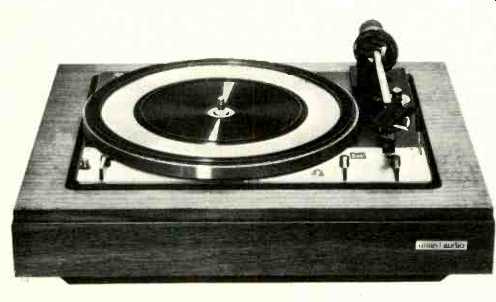
MANUFACTURER'S SPECIFICATIONS
Speeds: 33 1/3, 45, and 78 rpm; adjustable +3%.
Platter Diameter: 10% in.
Maximum Tracking Error: 0.5 deg.
Wow and Flutter at 33 1/3 rpm: 0.80%.
Pivot-to-stylus Distance: 8 1/4 in.
Dimensions: 13 x 10 3/4 in., 2 3/8 in. below motor board, 5 in. above.
Weight: 10 lbs.
Price: $139.50.
There are many locations for automatic record changers that will not accommodate the larger units, such as the Dual 1219, but the user still wants the same performance obtainable with the top-of-the-line model, or as near that performance as possible. And therein lies the advantage of the 1218, which is very similar in performance, yet just a little smaller, and therefore can often be utilized in locations which preclude the use of the larger model.
The 1219 was profiled in these pages in December, 1969, and most of what was said in that profile could apply to the 1218. The newer-and smaller-unit still uses the two-ring gimbal mounting for the tonearm, with the elastically damped counterbalance which rotates on fine threads for fine balance, once the coarse balance is set by positioning the counterbalance shaft for approximate balance and tightening the thumb screw which keeps it in place. Stylus force is then set by a calibrated dial which applies the desired force through a long spiral spring which acts directly around the pivot of the tonearm.
Adjacent to the arm mounting is a knob which controls the amount of anti-skating force applied to the arm. The scale associated with this knob is calibrated for both conical and elliptical styli, with the graduations in black for elliptical styli, and in red for conical ones-indicative of the almost unanimous acceptance of the elliptical in high-quality installations.
A hole in the chassis just in front of the arm mounting gives access to an adjustment for varying the tonearm cueing height over a range of 1/8 inch. The bearings for the two degrees of motion of the turntable are of the low-friction pivot type, and the manufacturer claims bearing frictions of less than one-hundredth of a gram in the vertical direction, and less than two-hundredths in the horizontal.
The cartridge mounts on a holder which is locked to the tonearm head by a single lever. One advantage of this cartridge holder is that the screw head fits into slots in the holder and the cartridge is held by nuts on the cartridge end of the screws, so it is not necessary to choose the exact length of mounting screw to avoid excessive length which would inhibit the proper seating of the holder in the head. In some cartridge mounts, the screw threads directly into the plastic mount, and again the exact length must be selected to avoid interference with the placement of the holder into the head. Furthermore, threads into the plastic often wear with several changes--as some of us are wont to make in the search for the best cartridge for our systems. In the 1218, the vertical tracking adjustment is built into the head, with a small knob extending to the right to permit setting for single- or multiple-record use. This knob turns 90 deg. to either the "S" position for single-play use, and to the "M" position when several records are stacked on the spindle. This control adjusts for 15-deg. tracking for either one record, or for the middle records of a stack of six.
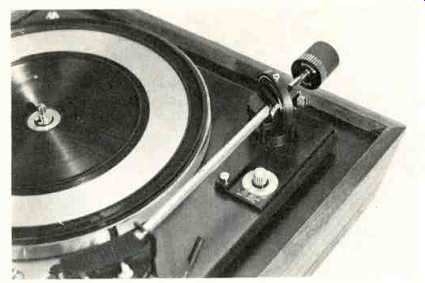
Fig. 1--Most adjustments are found near the arm mounting--coarse and fine
counterbalance, stylus force, anti-skating, and tonearm cueing height. Note
record spindle for single-play use-it rotates with the platter to avoid wearing
the center hole and to ensure concentricity.
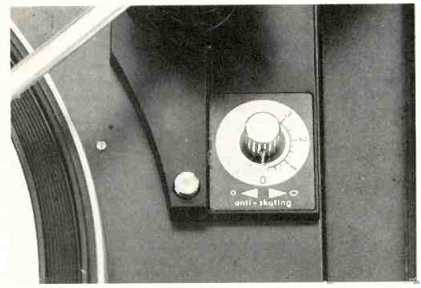
Fig. 2--Anti-skating adjustment knob, with its two scales--the one for conical
styli adjusts for as much as five grams, while the one for elliptical styli
adjusts only to three grams, which is, of course, about as high a force as
should ever be used for these popular styli. The slotted screw head to the
left of the knob adjusts the tonearm cueing height.
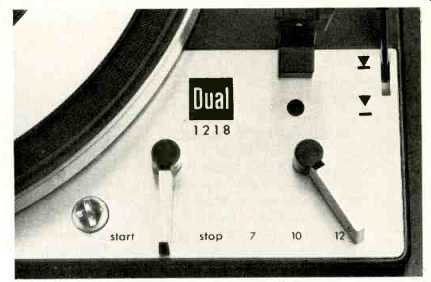
Fig. 3--The right front of the chassis accommodates the three most-used
operating controls-the cueing lever, which extends out of the photo at the
upper right, the record-size selector with positions for 7-, 10-, and 12-in.
records, and the start-stop lever. The hole above the record-size lever gives
access to an adjustment for the set-down position for 12-in. records.
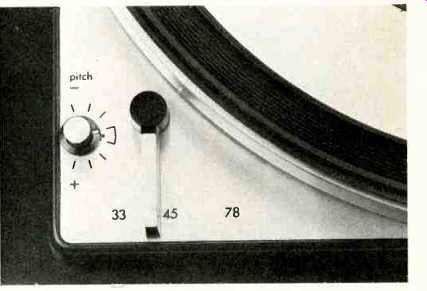
Fig. 4--The left-front corner accommodates the speed controls-the lever
for the three nominal speeds, and the knob for vernier adjustment of turntable
speed over a range of ±3%.
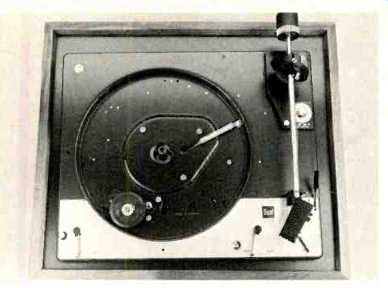
Fig. 5--Top view of the unit with the platter removed, showing the simplicity
of this side of the chassis. The idler wheel, shown at the lower left of
the turntable well, retracts from the stepped and tapered motor shaft when
the STOP position.
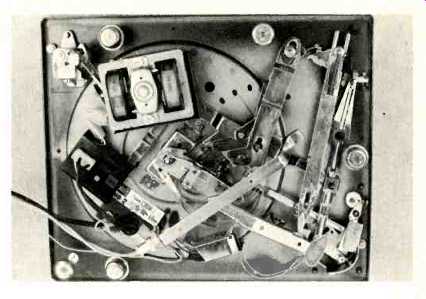
Fig. 6--The underside of the chassis is where the complexity is-and it is
remarkably similar to the top-of-the-line 1219.
The arm rest is fitted with a lock which secures the arm to the post and should normally be released before starting to play. However, if you should fail to release the lock, you have only to wait until the unit goes through its cycle and the operating lever returns to the center position. No harm will occur. You simply release the lock and start again.
The right front corner of the chassis is where the action is the lever to the right controls the point at which the arm sets down-for 7-, 10-, or 12-inch records. The other lever has a rest position at the center, and start and stop positions. To initiate playing, you press the lever to the left, and the mechanism takes over: starting the motor, raising the arm from the rest and positioning it over the lead-in groove of which record size you have selected, lowering the arm gently to the record, and returning the lever to the center position. If you prefer, you simply lift the arm from the rest and position it over the record anywhere you like-the motor starts and you can either place the stylus on the record by hand or you may use the cue-control lever to lower the arm automatically. You can interrupt the play at any time by moving the cue lever forward--the arm will lift up, but the motor continues running, and you can continue playing from the same place by moving the cue lever back.
If you are playing a stack of records, you operate the start lever and let the mechanism take over-the entire stack will be played through the unit will stop, returning the arm to the rest and shutting off the motor. To reject a record and change to the next one on the spindle, you move the lever to the start position. You can even play one record continuously by using the automatic spindle and placing the 45-rpm adapter disc on the spindle platform, over at the other corner of the chassis are the speed controls-a lever to select the nominal speed of either 33 1/2, 45, or 78 rpm-and a knob which varies the speed up or down by three per cent as desired to match the pitch to an instrument, for example.
Performance
The 1218 is an especially easy turntable to use. The controls are foolproof, and no harm results from changing a control setting during a change cycle, for instance, or for forgetting to release the arm lock before starting the playing. It has all the features needed for controlling its action, and appears to be well constructed. It is, of course, the most recent of a long line of changers and record players which have been improved continuously since the introduction of the first Dual in 1927, when the name came from a combination of both spring drive and an electric motor in the same turntable.
The platter is die cast of non-ferrous material and weighs four pounds-always a desirable feature to ensure constancy of speed. The black and chrome appearance of the unit is attractive, simple, and functional.
We measured its performance characteristics and found a signal-to-noise figure of 44 dB, using the old NAB method.
With a standard "A" weighting network, this figure increases to 62 dB-in itself considerably better than the average "hifi" single-play turntable of a decade ago. Wow-the speed variation below 6 Hz-was measured at 0.1 percent-while flutter was 0.05 percent measured from 5 to 250 Hz. Cycling time was measured at 13 seconds when operating at 33 1/2 rpm, 11 seconds at 45, and 8 seconds at 78. Well do we remember when a changer that cycled in 25 seconds was considered acceptable--as, of course, it was if you compared it to the early models of the Capehart, for instance.
The synchronous motor showed no speed variation whatever over a voltage range from 85 to 135 volts, but being synchronous, it was susceptible to frequency variations in the supply. This is of little concern to anyone in this country, since electric companies must maintain a close tolerance over frequency to make interconnections between areas possible.
If the unit were to be used in other countries, it would require a change of the motor pulley, since the United States and Canada are just about the only places where 60 Hz is the prevailing frequency of power lines. However, this problem would arise with any synchronously driven equipment, and it can be cured, fortunately.
For those who long for a fine turntable but who cannot get up the scratch for the 1219, the 1218 is a logical choice, and it will certainly give long and satisfactory service for the average user.
-C. G. McProud
(Audio magazine, Jan. 1972)
Also see:
Dual 1209 Auto/Professional Turntable (Oct. 1970)
Dual Model 1249 Automatic Turntable (Equip. Profile, Feb. 1977)
Dual 1249 turntable (ad, Jan. 1976)
Dual 601 Turntable (Jan. 1976)
Dual CS 731Q Automatic Single-Play Turntable (May 1980)
Dual CS 5000 Turntable and Ortofon X3-MC Cartridge (Nov. 1988)
= = = =